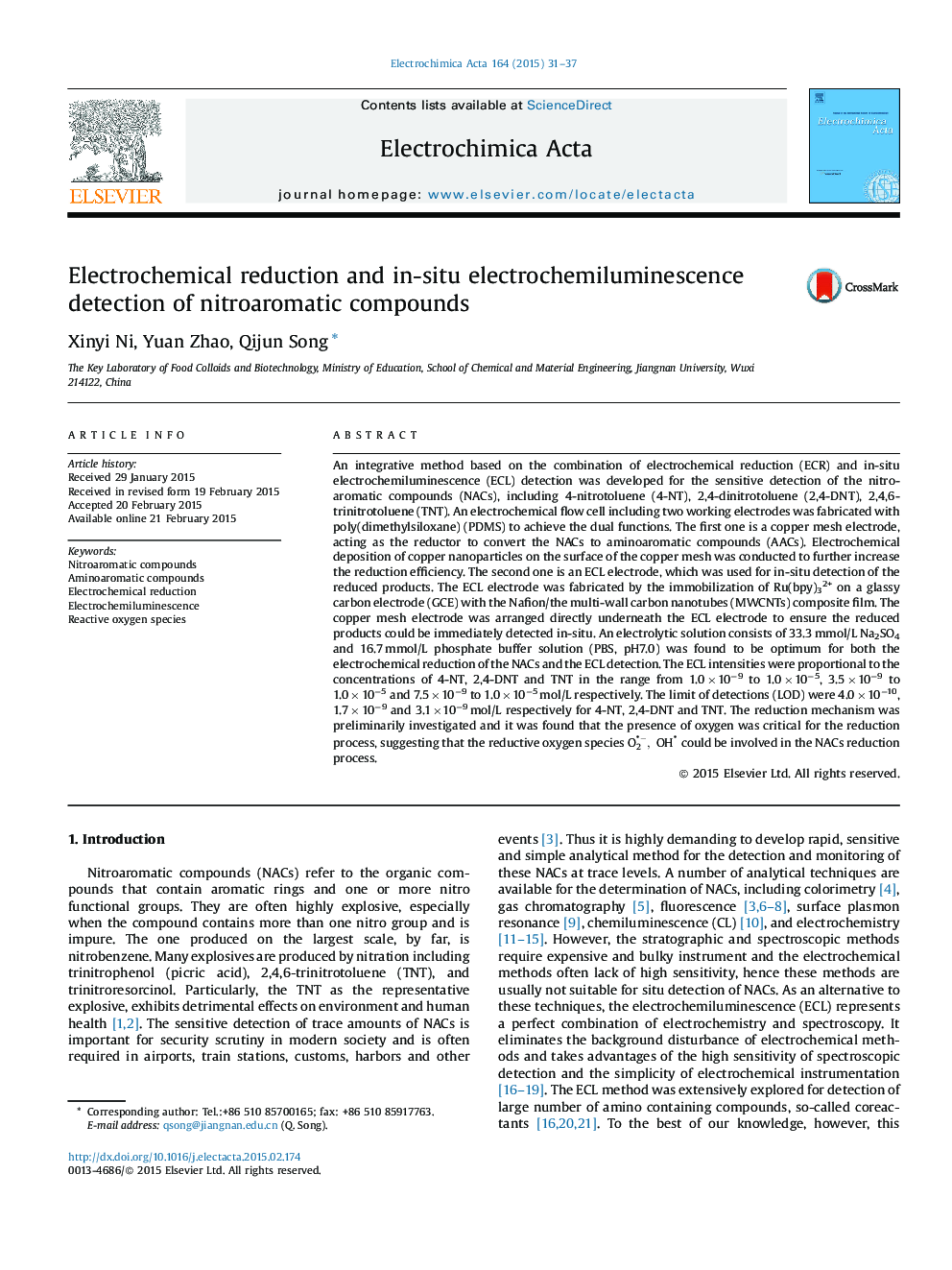| کد مقاله | کد نشریه | سال انتشار | مقاله انگلیسی | نسخه تمام متن |
|---|---|---|---|---|
| 184272 | 459572 | 2015 | 7 صفحه PDF | دانلود رایگان |
• Sensitive detection of nitroaromatic compounds was achieved by combining the reduction and the ECL electrode in one cell.
• The use of a mesh electrode allowed the reduced products can be detected in-situ with an electrochemiluminescence electrode.
• The electrochemical deposition of copper nanoparticles on the mesh electrode greatly enhanced the reduction efficiency.
• The mixed electrolytic solution of phosphate and sulfate allowed the electrochemical reduction and the ECL detection in one phase.
• The involvement of the dissolved oxygen in the electrochemical reduction of nitroaromatic compounds was proved.
An integrative method based on the combination of electrochemical reduction (ECR) and in-situ electrochemiluminescence (ECL) detection was developed for the sensitive detection of the nitroaromatic compounds (NACs), including 4-nitrotoluene (4-NT), 2,4-dinitrotoluene (2,4-DNT), 2,4,6-trinitrotoluene (TNT). An electrochemical flow cell including two working electrodes was fabricated with poly(dimethylsiloxane) (PDMS) to achieve the dual functions. The first one is a copper mesh electrode, acting as the reductor to convert the NACs to aminoaromatic compounds (AACs). Electrochemical deposition of copper nanoparticles on the surface of the copper mesh was conducted to further increase the reduction efficiency. The second one is an ECL electrode, which was used for in-situ detection of the reduced products. The ECL electrode was fabricated by the immobilization of Ru(bpy)32+ on a glassy carbon electrode (GCE) with the Nafion/the multi-wall carbon nanotubes (MWCNTs) composite film. The copper mesh electrode was arranged directly underneath the ECL electrode to ensure the reduced products could be immediately detected in-situ. An electrolytic solution consists of 33.3 mmol/L Na2SO4 and 16.7 mmol/L phosphate buffer solution (PBS, pH7.0) was found to be optimum for both the electrochemical reduction of the NACs and the ECL detection. The ECL intensities were proportional to the concentrations of 4-NT, 2,4-DNT and TNT in the range from 1.0 × 10−9 to 1.0 × 10−5, 3.5 × 10−9 to 1.0 × 10−5 and 7.5 × 10−9 to 1.0 × 10−5 mol/L respectively. The limit of detections (LOD) were 4.0 × 10−10, 1.7 × 10−9 and 3.1 × 10−9 mol/L respectively for 4-NT, 2,4-DNT and TNT. The reduction mechanism was preliminarily investigated and it was found that the presence of oxygen was critical for the reduction process, suggesting that the reductive oxygen species O2−,OH could be involved in the NACs reduction process.
Journal: Electrochimica Acta - Volume 164, 10 May 2015, Pages 31–37
